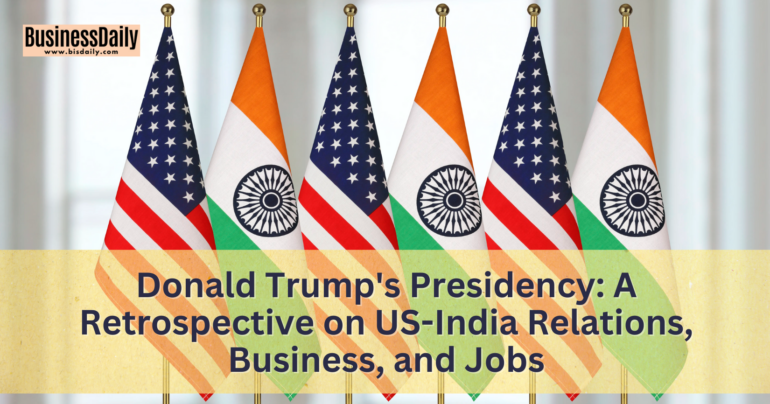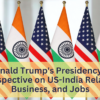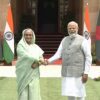Donald Trump’s presidency, spanning from 2017 to 2021, marked a significant period in US-India relations, with implications for bilateral trade, business negotiations, and job markets. This report analyzes the multifaceted impact of Trump’s policies on these aspects, drawing insights from contemporary social media reactions, particularly from X (formerly Twitter).
Going by the past experience when he (Donald Trump) was the President of the United States, it was a very positive experience. He is very pro-industry. We as Aditya Birla Group are the largest investors.” – Kumar Mangalam Birla, Chairman of the Aditya Birla Grou
US-India Relations:
During Trump’s tenure, the US-India strategic partnership saw both advancements and challenges. On one hand, defense agreements and the revival of the Quad security dialogue were notable achievements. As noted by posts on X, “Trump has always pushed for a strong India-US relationship. As President, he signed big defence agreements with India and helped revive groupings like the Quad,” highlighting a strategic alignment, especially in countering China’s influence in the region.
However, Trump’s “America First” policy introduced tensions, particularly in trade. Tariffs on steel and aluminum, along with the withdrawal of Generalized System of Preferences (GSP) benefits for India, were seen as protectionist moves that strained economic ties. A tweet from this period stated, “Trump imposed $260 millions penalty, increased duty on steel from India upto 25%, resultantly India sales to US reduced by almost half,” reflecting the immediate impact on trade relations.
Both sides will take their position and eventually will come for a win-win situation which has to happen.- Rajan Bharti Mittal, Vice Chairman & Managing Director of Bharti Enterprises
Business Implications:
The business landscape between the US and India was significantly altered by Trump’s policies. His administration’s focus on reducing trade deficits with India led to a mini-trade war, affecting sectors like steel, pharmaceuticals, and IT services. High tariffs and visa restrictions were recurring themes. Another X post captured this sentiment: “Trump restricted VISAs for Indians, Trump said NO to any deals with India,” pointing to a direct impact on business collaborations and mobility of professionals, particularly in the IT sector.
Despite these challenges, some believe Trump’s presidency indirectly benefited Indian businesses by pushing for diversification away from China. This perspective was echoed in posts on X: “Trump was good for the US economy, tough on China, and US blacks had the lowest unemployment in history,” suggesting that India could capitalize on shifting global supply chains.
Job Market Dynamics:
The visa policies under Trump, especially concerning H-1B visas, had a profound effect on Indian professionals. Restrictions on these visas made it harder for Indian tech workers to enter the US, impacting job opportunities and the global competitiveness of Indian IT firms. A tweet from that time lamented, “Trump is imposing 100% tariffs on India, decided to restrict H1B Visas,” illustrating the perceived threat to job prospects for Indians in the US.
Conversely, some argued that these restrictions encouraged a reverse brain gain, where skilled Indian professionals might return to India, potentially boosting the local tech industry.
Donald Trump’s presidency left a complex legacy on US-India relations. While it strengthened strategic ties, particularly in defense, it also introduced economic friction through protectionist policies. The job market felt the strain of visa restrictions, yet there were silver linings in terms of potential opportunities for India in the global market. As we look to the future, these dynamics continue to shape how both nations navigate their economic and strategic partnerships.





